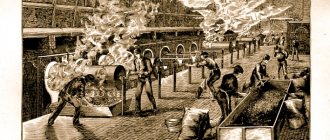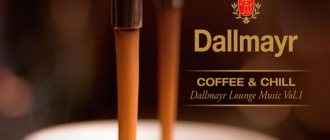CHOOSE GOOD COFFEE RIGHT
Choosing the right good coffee can take time and you need to have an idea of the labeling on the packages, the appearance of the coffee beans and other points. When visiting various Internet portals or stores with a large assortment of coffee, it is easy to get confused in the symbols on the packages, the decoding of which is not known to everyone. You can use the help of a specialist or independently familiarize yourself with information about the preparation of coffee raw materials - these are varieties, roasting, and grinding of coffee.
Before the cup reaches us, the coffee goes through a preparatory stage. Before grinding, coffee beans must be properly roasted. Due to different heat treatment methods, a tandem of different flavors and aromas has become available to us, and it is they that affect the taste of coffee. Next, you select the appropriate coffee to suit your taste.
Green coffee
Unroasted coffee has many beneficial properties because it is a natural product. Due to its cleansing effect, it is often included in various diets.
Green coffee goes through all stages of processing except roasting. After collection, the fruits are dried at a certain temperature. In this way, the grains are not roasted, but microbes leave them. Brewing unroasted coffee is as simple as brewing black coffee. The product is difficult to find on the open market, its cost is much higher. But real gourmets order unroasted coffee online.
COFFEE ROASTING AND WHAT TYPES OF ROASTING ARE THERE
After complete heat treatment of coffee beans, their color and, in some cases, size change. There is no generally accepted classification of the degree of roasting of coffee raw materials. Therefore, any country can use its own gradient values indicating the types of coffee roasting used. This is interesting information, we will look at it in this section.
Perhaps the most common designation method used is a scale, numbered from 1 to 5, which can be seen on any packaging of natural coffee. Sometimes, when indicating the types of coffee roasting, the following names are used:
- Viennese roast;
- French;
- Italian;
- Scandinavian;
- American;
- cinnamon;
- urban.
Before heat treatment, the skin of the coffee beans has a smooth texture and a dull olive tint. At the end of roasting, the color changes dramatically; from it you can visually determine the degree of roasting of the coffee bean and, therefore, what taste will prevail in the finished drink.
Viennese roasting of coffee - with it, the beans also become bright brown with a surface covered with an oil film. During the roasting process, smoke comes from the coffee beans and they “shoot.” The finished drink has light acidity and a slightly sweet taste. Remnants of the aroma are still perceptible, but the bitter notes are already present. Quite often, beans that have undergone Viennese roasting are used to make espresso coffee.
French roasting of coffee is perhaps the most common and popular method of preparing coffee. French roasting of coffee gives the beans a peculiar shine, and the drink becomes a rich brown color. Frying is carried out upon completion of the “second crack” - click. Freshly brewed coffee has the rich flavor of well-processed beans and a thick consistency.
Italian coffee roasting involves the highest degree of temperature exposure on the beans, as a result of which the beans become almost black in color. During the process of intense roasting of coffee, the most valuable oil compositions and the unique aroma of the drink are lost. Which, however, does not detract from its advantages when preparing various coffee drinks.
When the Scandinavian roasting method , the beans swell and take on a light brown color. The finished drink has a strong and at the same time light coffee aroma and a pleasant taste.
American coffee roasting – if we are talking about types of coffee roasting, then this is the fastest way. The heat treatment of coffee beans is considered complete after the “first crack” - (a soft click that is characteristic after the evaporation of gases). During the roasting process, the grain becomes visually larger and acquires a deep brown color, the stage of sugar decomposition passes into crystallization, and is characterized by quite strong acidity.
Cinnamon or, as it is also called “light” roasting , is a thermal process in which coffee beans are processed until “one first click”. Roasted coffee beans become light brown in color with a matte tint, but their structure becomes dry and does not have a glossy shine. The finished freshly brewed drink contains a refined taste of coffee with a tart tint and a slightly noticeable, pleasant sourness.
Urban “medium” roasting of coffee involves heat treating the beans until they acquire a rich brown color.
This type of roasting releases oils onto the surface that add a glossy appearance to the roasted beans. With medium roast, most of the natural characteristics of the drink are well preserved - an expressive aroma, “caramel” sweetness and a long, caressingly pleasant aftertaste.
Types and degrees of roasting in one table
| Roasting degree | Types of roasting | External signs of beans after roasting | Features of the resulting drink | What types of coffee are used for processing |
| Weak | Scandinavian (cinnamon) | Pale brown grains with the smell of fresh bread | Weak, unsaturated, with a subtle, pleasant, but unstable aroma | High-grade single-origin Arabica beans from Kenya, Nicaragua, Dominican Republic, Jamaica |
| American | The color of the grains is reddish, cracks are visible on their surface | Weak, sourish, delicate, sweet aroma | Inexpensive Arabica varieties | |
| Urban | Brown glossy grains with visible droplets of oil | A sweetish drink with a faint nutty flavor and caramel aroma | Varieties of Arabica | |
| Viennese | Dark brown grains with a glossy, oily surface | The rich drink picks up the bitterness and reveals a sweetish caramel taste. | Various varieties of Arabica, blends of Arabica and Robusta | |
| Average | French | Dark brown, glossy grains, oiliness and cracks are clearly visible on the surface | The taste is rich, without sourness, with notes of burnt caramel. The drink is dark in color, dense, aromatic | Various varieties of Arabica, blends of Arabica and Robusta |
| Strong | Italian or Spanish | The color of the grains is almost black with a greasy surface | The taste has a bright bitterness and astringency. Chocolate flavor and long aftertaste | Arabica and Robusta |
| Cuban | The grain is almost black, brittle and brittle | The taste is pungent, bitter, tart. The drink is thick, with a “burnt” taste. Long aftertaste | Varieties of Cuban elite and inexpensive Arabica, Robusta |
Collected on time, properly processed, carefully preserved, skillfully roasted coffee beans give us a wonderful drink. Roasting technologies continue to improve, and new varieties appear. We have many delicious coffee discoveries ahead!
ROASTING DEGREE OF COFFEE BEANS
Coffee beans, their color, shades of aroma, and the presence of essential oils in the finished product are directly affected by the degree of coffee roasting. We can view the values of the degree of roasting of beans used on the packaging or determine visually if we buy coffee by weight:
- weak “light” degree of roasting;
- medium degree of roasting;
- strong or “dark” degree of roasting.
Medium roast
Often called universal. Traditional method for beans from Costa Rica, Brazil, Colombia. Ethiopian varieties are also good in this roast. Suitable for any coffee preparation method and recipe. It is no coincidence that she is the most popular in Russia
First degree medium roast
It is known as full city or full sity.
The grain acquires a good balance between sour and bitter notes, natural sweetness appears, and drops of oil appear on the surface of the fried beans. The grains acquire an even more variegated appearance due to the active release of sugar and its caramelization. The signal for the end of roasting is the appearance of second pops. They are deeper and quieter than the first one. The second cracking manifests itself first as rare, one might say, single pops.
The finished coffee has a beautiful color, a traditionally strong aroma, high strength and a balanced taste, in which sour notes are still felt, but the nutty, bitter tones are already clearly visible.
Second degree medium roast
It has many other names - Viennese, French light, business roast, velvet, corduroy and so on.
The beans darken to a characteristic dark brown color, oily secretions are visible, which give the coffee a glossy appearance, and a bluish smoke appears above the beans from the burning of oils. The second pops become louder and more frequent, and the strong aroma of roasted coffee spreads.
The taste of the drink made from this roasted grain is rich and strong, the sour notes completely disappear, but the caramel and sweet flavors are well revealed, and the characteristic coffee bitterness sets the tone.
INFLUENCE OF ROASTING DEGREE ON COFFEE STRENGTH
The strength of coffee does not depend on its level of roasting. Darker roasting of beans only determines the lower content of guaranine (caffeine). For example, light roast coffee beans contain 1.37% guaranine, while dark roast coffee beans contain 1.31%. You yourself can adjust the strength of the coffee according to your desire or mood, the amount of water or the amount of raw materials.
The strength of coffee depends on factors such as:
- The ratio of water and coffee;
- Type of grinding of coffee beans;
- Preferred method of preparing the drink.
As a result, the same type of coffee, depending on the degree of influence of these factors, may have differences in strength.
Medium roast coffee gives a richer color with a bitter aftertaste. A medium roast is characterized by a “second click” sound. The coffee beans release essential oils and the sugar caramelizes.
Strong degree of roasting - the taste of coffee with it has a characteristic bitterness with a nutty-chocolate aftertaste. The finished product is saturated with natural aroma, and the caffeine scale is at a high level. The grains acquire a dark brown color. A coffee drink made from such raw materials will have not only a deeply rich taste, but also an aroma.
But the highest degree of roasting of beans is used quite rarely. This kind of roasting evaporates almost all the moisture contained in the grain, due to which their solid consistency becomes thinner. Coffee brewed from such beans will be strong, with a bright and distinctive taste. However, there are quite a lot of people who like this coffee; it “invigorates” well.
Features of French roasting
French processing of beans is strikingly different from American roasting in its intensity. In the first case, the shell is covered with an oily layer, and the color of the grains can be either dark brown or black. This depends on the temperature at which the processing occurs.
Owners of famous coffee shops prefer to purchase the product in small wholesale. This is due to the unique taste of the drink made from French roasted beans. It is distinguished by its strength, richness, slightly burnt aroma and bitter-sweet taste.
Residents of France prefer strong coffee. To achieve this result, frying occurs at a temperature of +240 degrees.
Worth knowing! French roasted beans are often used to prepare Espresso coffee, which has the required thickness and density.
COFFEE ROASTING: TECHNOLOGIES, TYPES AND METHODS OF ROASTING
Let's look at another type that classifies coffee roasting. It depends on the technologies used. We will describe it for a more complete picture characterizing such a stage of raw material processing as coffee roasting. Today, enterprises use the following technological types of processing and roasting:
THERMAL ROASTING. This roasting method uses a specialized mechanism, which is equipped with a huge drum; it can hold up to two tons of raw materials. During continuous rotation, air heated to 200°C enters it. Thanks to this technology, coffee beans are evenly roasted, evaporating any foreign impurities.
DIELECTRIC COFFEE ROASTING. The process itself is similar to the problem statement for microwave ovens: exposure to superfrequency waves helps roast coffee inside. The thermal effect on grains is minimized. As a result, the ground raw materials will have a uniform taste. This is the most practical type of heat treatment of the product.
INFRARED HEAT TREATMENT. This method involves the use of a programmed machine that maintains a set temperature. The result of this treatment is a significant “bloating” of the grains in volume. During the process, complete combustion of foreign impurities occurs.
Deep roast
Colors the grains a deep, dark brown color. They lose a fifth of their weight and a significant portion of their water. A large amount of aromatic oils are released, and strong caramelization of sugar in the grain occurs. Heavily roasted grains produce a finished drink of high density and strength. This is the traditional processing method for Guatemalan, Cuban and some Brazilian varieties.
First degree deep roast
It is also called French or Turkish.
Continues after the second cracking, when the clicks and crackling have almost stopped. Cracks continue to form on the surface of the beans, smoke appears, the aroma of roasted coffee intensifies, and burnt notes appear in it.
The taste of the finished drink is bitter, with caramel and sweet notes. Coffee is distinguished by its high density and strength.
Second degree deep roast
It is also called continental, European or New Orleans.
The grain becomes even darker, acquiring the color of dark chocolate. There are many wide cracks on its surface. There is clearly visible smoke. The most important thing at this stage is not to overcook the grains, otherwise they will quickly start to burn.
The finished drink is thick, dense, strong, with bitter caramel and smoky notes; light tones of burnt sugar may be felt if the sugar content of the variety was high.
WHAT HAPPENS TO THE COFFEE BEAN DURING THE ROASTING PROCESS?
Not yet roasted, green coffee beans have a weak taste and virtually no aroma. During the process of roasting coffee beans, fermentation occurs, due to which the essential oils contained in coffee are released and other processes are activated that help to release other substances present in this drink. All of them affect the taste, aroma, and effect of coffee.
During the roasting process, more than 400 carbon-containing substances are released, collectively called coffeeols. This combination of volatile components gives the drink a characteristic, familiar aroma of coffee. Due to enzymatic hydrolysis, the fiber contained in the grains is destroyed, the glucose content decreases, and tannins are destroyed at the same time.
What is significant is that the process of roasting coffee beans does not destroy vitamin B. The roasting time is also important. The amount of caffeine in the finished product depends on these indicators. The longer this process, the less caffeine, and, accordingly, the more pronounced bitterness in the drink.
The coffee roasting process is not the final stage in the preparation of finished raw materials. After exposing the coffee beans to high temperatures, they are cooled with a stream of cold air. Then the grains lie for a certain time according to the technology and only after this time they become suitable for consumption in the form we are familiar with.
WHAT IS IT USEFUL TO KNOW ABOUT ROASTING COFFEE BEANS?
Every coffee connoisseur, whether professional or amateur, can freely experiment with this drink using different combinations of preparation or roasting, while radically changing the taste of the same type of coffee.
A low degree of roasting reveals sour notes in the finished drink. Its strength will not be high, but the smell and taste of coffee will become delicate and delicious.
Medium roast gives you more opportunities to cook and invent interesting recipes and different combinations of coffee, which will make the coffee product even more sophisticated and interesting.
A strong degree of roasting of coffee will give the drink density, strength and a dark hue. Due to the highest degree of heat treatment of the beans - “Italian roasting”, it is easy to achieve the perfect espresso, which has a dense consistency and has a strong taste and invigorating effect.
Light roast
It includes several degrees of heat treatment of grains, each of which has its own meaning.
First degree light roast
She is Scandinavian, she is also cinnamon (from the word “cinnamon”).
Characterized by minimal thermal exposure time. Often produced at low temperatures. The grains do not have time to reveal the aromatic bouquet of oils, they slightly increase in size and begin to exude a sour yeast aroma. It is reminiscent of the smell of freshly baked bread. It is best suited for highland Arabica varieties from Jamaica and Kenya; Nicaraguan coffee is often roasted this way, which has a loose structure and releases both water and oxygen well even in the first stages of thermal exposure.
The drink made from such grains is weak and pale brown in color. It has a loose body of taste and a subtle, subtle aroma.
Second degree light roast
She is American or New England.
Produced before the first crack or click of the grain. At the same time, the coffee begins to actively release aromatic oils. The color of the grains changes, they begin to darken more intensely due to the formation of saccharides from starch, but still have a light brown color. The first cracks appear due to loss of moisture and exposure to heat.
The drink made from such coffee is more rich, its color and aroma become brighter, but do not gain real expressiveness. With this roasting, the coffee aroma is already clearly discernible.
Third degree light roast
It is also urban, partial or city.
Continues after the first click, but does not reach the second. At this stage, the grains, under the influence of rising temperatures, acquire a characteristic reddish tint and uneven color, the so-called variegated grain stage. The smell intensifies, distinguishing between coffee and herbal notes. The cracks are already clearly visible.
The drink made from this grain has a bright sour taste. The coffee color is darker and the aroma is well expressed.
ROASTING COFFEE AT HOME
But this, I’m sure will be of interest to many. After all, coffee roasting can be used at home. And you don't even need to purchase special equipment. You can perfectly use such kitchen utensils as:
- cast iron frying pan with a thick bottom;
- regular oven.
Then you should know that the frying pan should only be used for roasting coffee beans, because they absorb any foreign odors well and quickly. At the preparatory stage, raw coffee beans are washed and then dried well. Only then the coffee is poured into the frying pan in a thick layer.
It is desirable that the heating temperature of the product should be at least 200 degrees. The beans must be constantly stirred to achieve the perfect all-round roast. During the process, you will be able to hear clicks, as well as observe the color changes of the product yourself - the lighter it is, the softer the taste will be.
Lovers of strong espresso coffee should wait until the beans darken to a darker brown color. This method of roasting coffee beans will give the drink a characteristic bitterness and a pronounced, intense taste.
Coffee is also roasted in the oven. This method of roasting at home is even a little easier, because in the oven you have the opportunity to set a stable temperature and calmly roast the coffee beans to the degree you need.
After roasting the coffee using the method you choose, the beans should cool in an airtight container. For the first 8-10 hours, leave the lid slightly open. This will remove all excess gases from the coffee beans. After about a day, you can pour the beans into an airtight container for storage, at which time you can grind the beans and brew your favorite freshly ground, tasty and aromatic coffee.
Highly roasted coffee
Deeply roasted coffee has dark brown beans with faint traces of oiliness. The taste is less sour than previous options. With this method, essential oils are actively released, which contributes to the appearance of a brighter and richer aroma, which reveals itself more fully. The brewed drink turns out dark. According to the European classification, deep roasting is called French.
French roast (VII degree)
French roast is one of the most popular for making espresso.
The coffee beans turn an even darker brown with cracks on the surface.
The coffee turns out dense and strong. You can feel burnt caramel notes in the taste, the aroma is strong.
Industrial roasting
Considering how much coffee is sold in stores every day, it is difficult to imagine that roasting of beans is still done only by hand. Coffee production factories use special roasters, which are a movable drum with a heating element in which the coffee reaches the desired condition. Modern devices contain special devices for monitoring the state of roasting. However, they cannot completely replace a good master. Therefore, the degree of readiness is determined by a sample, which is assessed by an experienced barista.
Good coffee requires three things, quality beans, proper roasting and proper preparation. All this is not so easy to master, but with the proper skill, even an amateur can prepare a tasty drink from raw grains.
Why and how are coffee beans roasted?
Roasting is a heat treatment during which a complex chemical reaction called pyrolysis occurs. As a result of exposure to high temperatures, starch is converted into sugar, fatty acids are oxidized, and essential oils come to the surface of the coffee bean, giving it a special aroma and taste.
To roast coffee correctly, you need to be a real professional, because if you over- or under-roast it a little, you can ruin everything. Moreover, the rate of oil melting is unique for each variety and harvest, so there is no universal formula for calculating the optimal time.
To indicate the stages of frying, experts use the concept of “popping” (clicking or cracking). The first pop occurs at the moment when oil begins to be released from the beans, and after subsequent ones, the coffee turns out to be completely roasted and it will no longer be possible to get more oil from it. Also, when roasting coffee beans, experts pay attention to their shade, which darkens over time.










